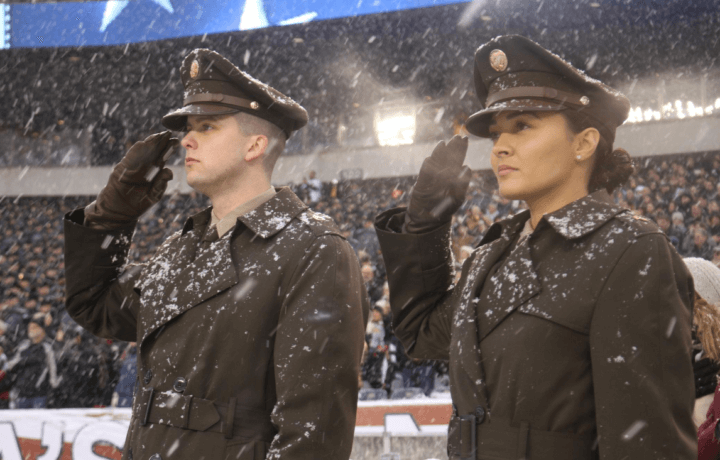Almost a year ago, the U.S. Army officially retired the pixilated Universal Camouflage Pattern (UCP) uniform that was first introduced in 2004. The UCP never lived up to the promise that it would be ideal for all terrain – and some critics even argued that the only “universal” aspect was that it failed to blend into any surroundings.
By 2010, the Army began to look for alternatives and spent five years testing the current Operational Camouflage pattern (OCP). As of Oct. 1 of last year, the Army required all soldiers to possess and wear the OCP. That was the latest transition in camouflage that goes back more than a century. Now, a similar transition is taking place with the Army Service Uniform (ASU), which is worn by Army personnel in situations where business dress is required. The ASU can be worn at most public and official functions and is essentially comparable to civilian business attire.
Army Uniforms: Where Everything Old is New Again
The Army Green Service Uniform is set to be part of every new soldier’s wardrobe beginning next year. If it seems familiar, that is because it is modeled on the Army’s iconic World War-era “pinks and greens,” which include pinkish-brown trousers and dark olive jackets.
John Adams-Graf, author of Warman’s World War II Collectibles told ClearanceJobs, “The (re-)adoption of the pink and green uniform is move of positive branding. The Army recognized the nostalgic value of the iconic pink and green uniforms — after all, it was the uniform of an Army that helped save the world from fascism.”
Shades of Green Over the Years
In the mid-1950s the Army introduced a new, all-ranks, “Class A” Army Green shade 44 service uniform, and while blue was originally considered as it was the color of American uniforms going back to the Continental Army, it was determined that it would have been difficult to distinguish it from the U.S. Air Force’s and U.S. Navy’s service uniforms.
A tan summer uniform was also used in the early stages of the Cold War but was dropped by the mid-1960s. The tan uniform was relegated to a “Class B” short-sleeve shirt without tie and remained in use until the 1980s. In 2006, the Army Chief of Staff announced that a new version of the dress blue uniform would be adopted and worn by all ranks. It was meant to combine the ceremonial, dress, and service uniforms. The uniform made its debut at the 2007 State of the Union Address, when Chief of Staff General Peter Schoomaker wore it. Three years later, it was issued to all soldiers in the Army.
And Now We’re Back in the Greens
Now, about a decade after adopting the blue uniform, the Army has opted to reverse course and go with the Army Green Service Uniform.
“The Army is currently the only service that does not have a uniform for everyday business environments,” stated Lt. Col. Jonathan Allen, product manager for soldier clothing and individual equipment. Allen added that the green service uniform “sets a more appropriate standard for professionalism in an office setting than the [Army Service Uniform] or the Army Combat Uniform.”
In addition, the new uniform will be “cost-neutral” to enlisted soldiers, and would not come at an added cost to U.S. taxpayers. The Army Blue Service Uniform will not be fully retired. Instead, it will return to its former use as a formal dress uniform. The uniforms were originally to be fielded to soldiers reporting to their first units this summer, but as with much in the world there have been delays due to the Covid-19 pandemic.
Army Plans to Phase in the Uniforms
To date, the Army has issued the service green uniforms to select senior leaders, the Army Band, recruiters, and drill sergeants for their respective feedback on the retro-style uniform. Soldiers attending the Army’s Recruiting and Retention College at Fort Knox, KY received their Army Greens last month in an effort to ensure all recruiters are issued the uniform starting in November. All recruiters should be issued the uniform by April of next year. Recruiters and drill sergeants have been a priority because they serve as the face of the Army.
Fort Sill, OK, will be the first training location to issue the uniform, shortly followed by Fort Leonard Wood, MO; Fort Benning, GA; and Fort Jackson, SC. Soldiers already in service will not need to rush out and acquire the Army Green Service Uniform either. Troops will have until Oct. 1, 2027 to acquire their own service greens.




